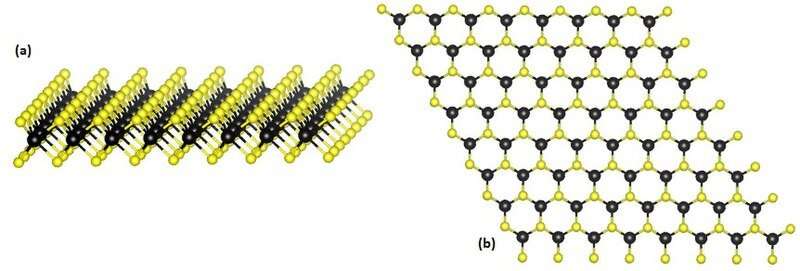Transition metal dichalcogenides get weaker when thickness decreases

A new study recently published in Advanced Materials reveals that MoSe2, a prominent material of the transition metal dichalcogenides (TMDs) family, loses relative stiffness when its thickness is reduced. This work was carried out by researchers from the Adam Mickiewicz University (AMU) in Poznan (Poland) and the ICN2, under the coordination of Dr. Bartlomiej Graczykowski and Dr. Klaas-Jan Tielrooij, respectively.
Since the discovery of graphene, a material as thin as a single layer of atoms, a wide variety of new 2D materials have been fabricated and studied. The general expectation is that, as for graphene, such materials' mechanical properties are superior to their bulk counterparts. However, this is not the case for molybdenum diselenide (MoSe2), one of the most attractive members of the transition metal dichalcogenides (TMD) family, which on the contrary becomes increasingly softer when made thinner.
These results, which contradict the common assumption that relative mechanical strength increases at the nanoscale, were reported in a paper recently published in the journal Advanced Materials. The study was coordinated by Dr. Bartlomiej Graczykowski, from the Adam Mickiewicz University (AMU) in Poznan (Poland), and Dr. Klaas-Jan Tielrooij, leader of the ICN2 Ultrafast Dynamics in Nanoscale Systems group. "Our findings are extraordinary since they clearly show a progressive softening of MoSe2 while reducing its thickness from bulk to three molecular layers," explains Visnja Babacic, Ph.D. student at AMU and first author of the paper.
The research team was able to study the elastic properties of various samples of MoSe2, of progressively thinner dimensions, by means of a technique called micro-Brillouin light scattering. This contactless and non-destructive analysis method uses the interaction of light with vibrations in the material (acoustic waves in the gigahertz regime) to extract information about its mechanical characteristics. "It is a more reliable and perhaps more useful technique than traditional contact methods since it can provide both mechanical information and thickness values of the membranes," says Dr. Bartolomej Graczykowski, leader of the project at AMU. The same approach could also be used to study other van der Waals (vdW) materials.
This elastic softening of the material when decreasing the thickness of the sample, called the elastic size effect, has profound implications for the design and development of nanodevices, such as nanomechanical resonators for sensors, where mechanical properties are essential for their durability and robust performance. "The results of our study are also highly relevant for related research fields, such as nanoscale thermal transport, electronics, or resonators employing vdW materials," says Dr. Klaas-Jan Tielrooij, leader of the project at the ICN2.
More information: Visnja Babacic et al. Thickness‐Dependent Elastic Softening of Few‐Layer Free‐Standing MoSe2, Advanced Materials (2021). DOI: 10.1002/adma.202008614
Journal information: Advanced Materials
Provided by ICN2





















